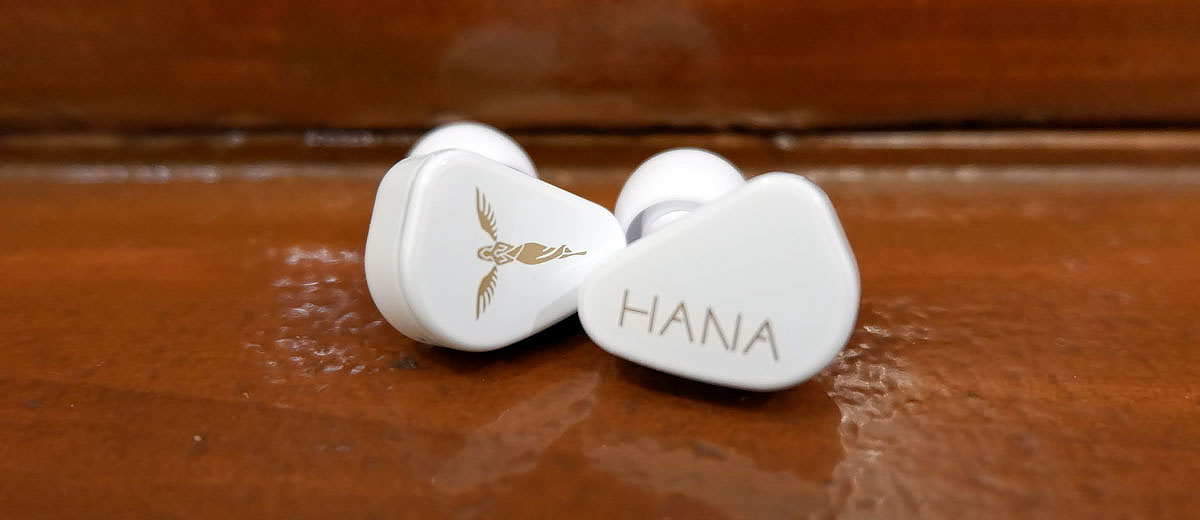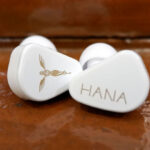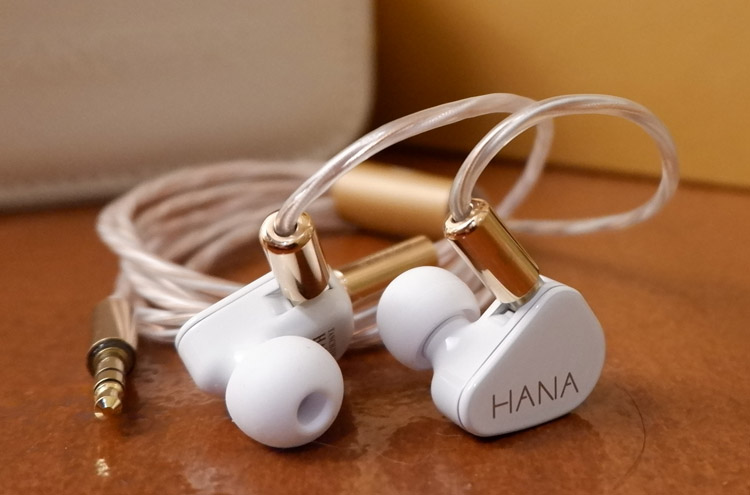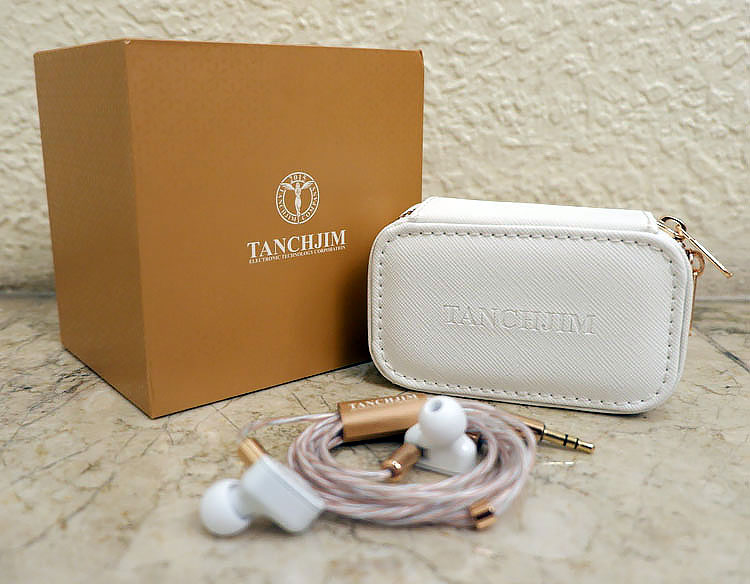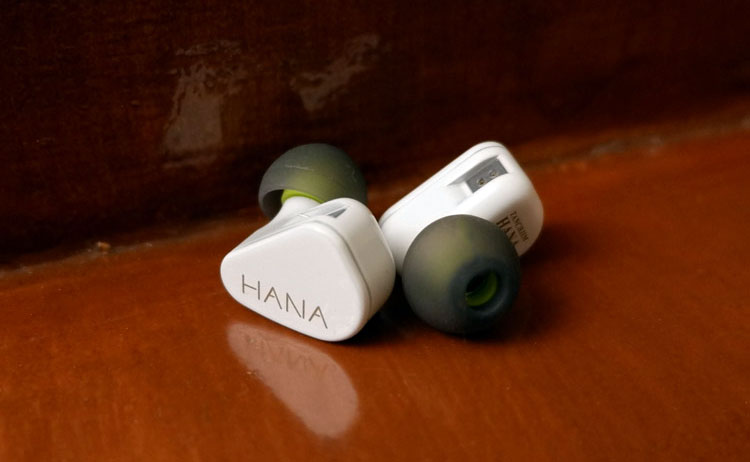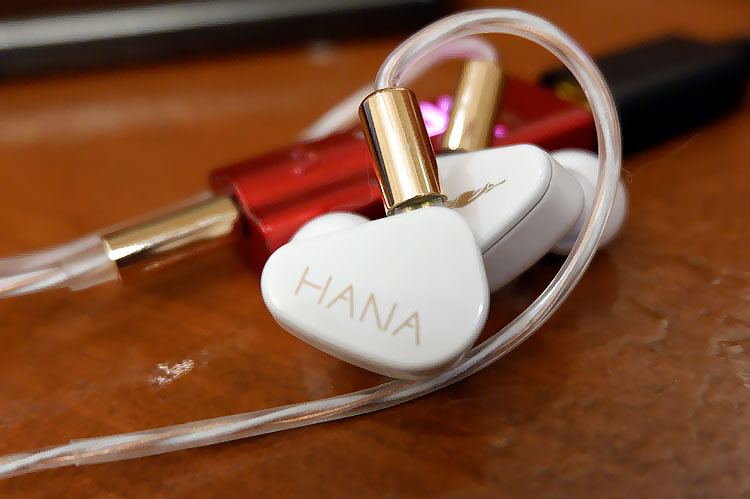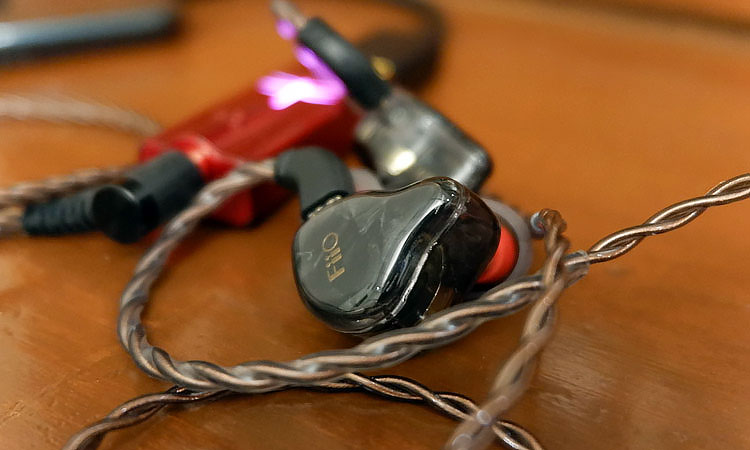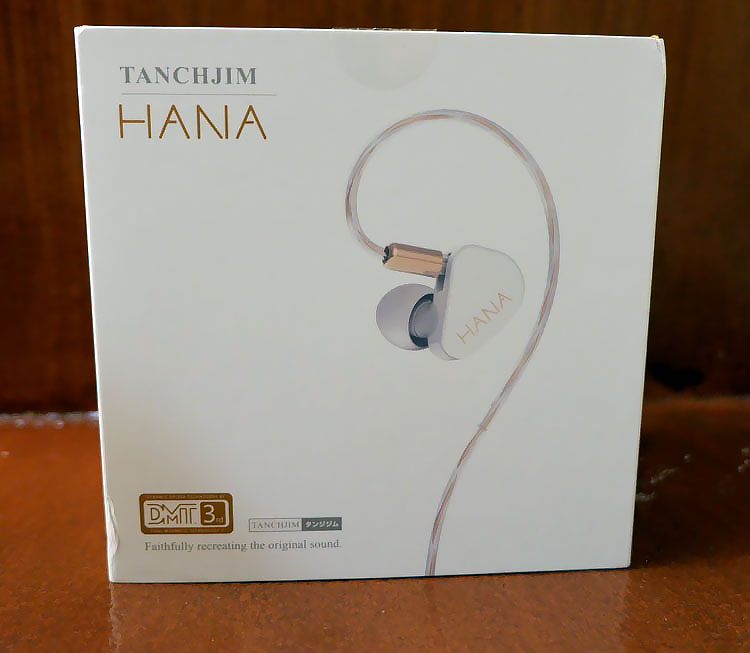The Tanchjim HANA is a single liquid crystal polymer dynamic driver universal monitor using a 3rd generation DMT high magnetic flux driver. It is priced at $159.99.
Disclaimer: The Tanchjim HANA was sent to us is a sample in exchange for our honest opinion. We thank Shenzhen Audio & Tanchjim for this opportunity.
To learn more about Tanchjim reviews on Headfonics you can click here.
Note, this review follows our new scoring guidelines for 2020 which you can read up on here.
I am not too familiar with the Tanchjim brand so I had quite an open mind on what to expect with their new Hana IEM.
Roughly translated their Chinese name, which is 天使吉米, means Angel Prosperity, but they decided to do a phonetic translation instead, coming from 天(tiān)使(shǐ)吉(jí)米(mǐ), they came up with Tanchjim.
Tanchjim has been manufacturing headphones since 2015, and has manufactured IEM’s with the concept of combining excellent aesthetic design, with excellent performance. They have since produced some popular models including their flagship Tanchjim Oxygen IEM’s.
Technology Inside
Inside the shells are a pair of liquid crystal polymer diaphragm. Liquid crystal polymer diaphragm cones are designed to extend the frequency range to the extremes for headphones and IEM’s. Because of this technology, the IEM’s are capable of 5Hz-50kHz, well beyond the normal ability of human hearing.
This frequency range though, might not be totally useless, as this ability to present such a wide range, might ensure that the drivers would be able to present the normal audible frequencies(20-20KHz), more accurately, and give the IEM’s the ability to maintain tighter control of the audible frequencies.
The Hana is also equipped with a 3rd generation DMT high magnetic flux driver, which is supposed to enable the drivers to remain stable while producing louder sounds.
With these technologies involved, the single Dynamic driver in the Hana is not just a common 1DD IEM, but one that is supposed to be able to compete with even multiple driver IEM’s in terms of clarity, and quality, while having a natural advantage of coherence due to just having 1DD.
Packaging & accessories
Tanchjim’s concept included an emphasis on great aesthetics, and I believe that they applied it to every aspect of their product. The package arrived in a glamorous box, mostly white adorned with rose gold accents. This immediately sets them apart, since their color scheme is more commonly found in posh boutiques, than in hifi stores.
The Tanchjim Hana comes in a rose gold square box that seems to have come straight from a watch store. Opening the package you just see the combination of white, and rose gold all over the product package; the aesthetic seems to have been carried over well into every component in the package of the Hana.
The Hana comes with a white leather carrying case, with a rose gold plated zipper. The leather carrying case looks so elegant that it looks like it wouldn’t be out of place in a Michael Kors, or a Louis Vuitton store.
The Hana also comes with an assortment of ear tips, 3 pairs with wide bore silicone tips labeled as treble enhancing, and 3 pairs of small-bore silicone tips labeled as bass enhancing. To round off the package, of course, the Hana also came with a detachable cable, and the IEM’s themselves, already fitted with what seems to be an extra pair of small-bore silicone tips.
Design
The Hana comes in a pair of stainless steel shells, similar to the ones used in the Tanchjim Oxygen flagships. However, they have decided to paint the shells this time, giving them the same elegant aesthetic of white and rose gold.
The heft of the shells, however, does create a minor issue, as the shells would sometimes fall off the cables when I’m winding the cables to put them back inside the case. The shape remained generally the same, which means that the nozzle is on the shorter side, to the point that it might lead to some issues with the fit of the IEM.
With shorter nozzles, the Hana will not seal too well, but the biggest disappointment that I have with the Hana is that the stock ear tips seem to be left inside my ears when I remove the IEM’s. Changing out the ear tips into ear tips from other manufacturers made a significant improvement over the stock ear tips though in this regard.
Cable
The Hana came with an OFC cable that terminates in 0.78mm on the IEM end, and a 3.5mm on the other end. The Y-split also has an elegant rose gold pendant with the word HANA electroplated on the pendant itself. Aesthetically, the cable looks very pleasing and elegant, especially when seen as a system connected to the shells themselves.
I would have wanted the part of the cable connecting to the IEM shells to have a slightly more rigid ear hook design. This would have made the Hana a bit more ergonomic, and have helped the IEM’s stay in place more comfortably.
Sonically, I think the cable seems to be transparent and does not take away too much from the sound. I also like that the cables are light and soft, as this would ensure that they don’t introduce any cable noise when you move around while listening to them.
Overall, the cables are quite nice and remains true to the aesthetic that Tanchjim was aiming for with the HANA.
Comfort & Isolation
The Hana is on the heavier side for IEM’s as they are made of solid stainless steel, but the heft doesn’t translate to discomfort since I barely notice them when I wear them.
The IEM’s seem to stay in place despite being heavy, but the shorter nozzle doesn’t do the Hana any favors when it comes to isolation, as the noise comes in more than what I would expect from a pair of IEM’s. I think this would be one of the many ways that tip rolling would give the Hana a performance boost.
Ear tips
The Tanchjim Hana came with 2 types of ear tips, ones labeled as Bass enhancing, and the other labeled as treble enhancing. Both tips turned out to be quite loose for the Hana and should have been a design choice that Tanchjim improved on.
The treble tips were sharper for me and made the Hana slightly too bright and shouty for me. The bass tips on the other hand made the Hana move neutral for my taste. For both tips, the sound stage was about the same, so I didn’t see any benefit to using the treble tips for my personal enjoyment.
While taking a closer look at the tips though, I found that the best tips that I used on the Hana were not from Tanchjim themselves. I found a pair of generic ear tips with thick-walled silicone stems, with a soft silicone single flange.
In terms of sound, they made the Hana’s fairly balanced, and I think the sound was about the middle of the 2 provided stock tips. While the generic tips I used were not white and therefore stood out like a sore thumb amidst the otherwise glamorous aesthetic of the Hana, the tips gave the benefit of staying in place and having an overall balanced sound signature.
With the Hana, I believe that tip rolling will be a must.
Sound Impressions
Bass
I believe extending the frequency range well below the range of human hearing has its benefits, and it’s evident with the Hana. I can hear quite a bit of sub-bass with the Hana, probably because of the rated lowest frequency that it can produce to be 5Hz.
In terms of details and quality, the bass is able to retrieve quite a bit of detail and texturization. With every thump of the bass and drums being presented clearly. The quantity of the bass is a bit lower in the sub-bass regions but slowly ramps up as it transitions into the midrange.
I can say that the Hana’s have a good amount of bass while being able to control it to gives the low-end a very well-defined characteristic.
Midrange
While not being too forward, the midrange is still clear and articulate. When the vocalist is alone in the track, the ability of the Hana to present the midrange is quite evident. With the ability to clearly present the nuances of the vocal tracks, male vocals are quite clear, but on the side of being slightly recessed compared to other parts of the midrange.
What the Tanchjim Hana seems to specialize in is the upper midrange. The amount of details and clarity simply stands out compared to the rest of the frequency spectrum. Female vocals and guitar strums are just detailed, to the point that I almost imagine each string being plucked right in front of me.
Treble
With the upper midrange being the specialty of the Hana, the treble is not that far behind. With the upper range of the frequency being slightly pushed back, it still manages to be able to sound detailed.
Although the treble is very detailed, the Hana doesn’t do this by artificially emphasizing the treble too much. This gives the Hana much better treble clarity, while not ending up sibilant, a quality that I’m quite pleased with.
Soundstage & Imaging
For a pair of IEM’s, the Hana is able to present the soundstage quite well, extending around 2 inches out of my ears. This is already quite good for me, considering that they’re a solid closed back IEM that are plugged inside my ears.
In terms of imaging, the Hana is able to present these details quite well. I’m happy to say that the imaging is not limited to just the middle, the extreme left or right. Being able to have quite a bit of range, the Hana just doesn’t quite have the ability to create a clear center image.
Overall Sound Impressions
To me, the Tanchjim Hana’s sound quite nice, with a good amount of sound stage width, and being able to have good imaging details. Instrument separation is accurate, and each element of the music is clearly defined even when being presented with the challenge of busier tracks.
The overall sound signature is fairly neutral, dropping off slightly towards the sub-bass region, and have a slight emphasis on upper midrange and lower treble. Although not my personal favorite sound signature, I would still classify it as enjoyable especially for tracks centered on female vocals or guitars.
Synergy
With the Hana having a 32Ω impedance and sensitivity of just 110dB, they are definitely easy to drive on paper. When I tried them on my Nokia 7.2, I found that they really are easy to drive. They sounded pleasant with my phone, with the sound signature being fairly neutral, but I found the Hana’s quite closed in when plugged into my phone.
I then tried them on my trusty Dragonfly Red, and I found that the Hana was able to present more details with a better DAC. The soundstage and imaging came to the forefront, and it simply sounded spacious, and more holographic. The upper midrange details were also emphasized a bit more.
Overall, the Hana sounds its best with better sources, not because it wants to suck in all the power, but needs a more detailed upstream to present a richer, more detailed soundscape.
Select Comparisons
Fiio FD1
Coming in at just a third of the price, the FD1 would definitely lag behind the Hana in terms of build quality. Especially in the materials that were used in the shells, where the FD1 opted to use plastic shells with celluloid, the Hana came with solid stainless steel CNC machined shells, giving them a much better sense of heft.
Although the materials and overall look of the Hana edge out the FD1 on elegance, the FD1 pushes back with more practical additions. The FD1 had a more ergonomically shaped ear hook design, as well as a nice hardshell case that I raved about with the FD1.
Compared to the FD1, the Hana has a better grasp of the entire frequency range, being able to present the frequency extremes just a bit better. The overall sound signature of the 2 IEM’s are quite different though, while the Hana tends to have a more lush upper midrange and lower treble, the FD1 has an overall more detailed midrange.
Soundstage and imaging are where the Hana really edges the FD1 out. While the width of the sound stage might be about the same, the image clarity is simply on a whole other level with the Hana, being able to present instruments in between the extremes more accurately than the FD1.
Hifiman RE600
Overall, the Hana sounds much thicker than the RE600, and rightfully so, as the RE600 tends to be on the thinner side. The specialty of the RE600 in my opinion though is the superior staging capability with excellent imaging, as well as having a good quality upper midrange and treble.
Both qualities, the Hana is able to achieve to about the same degree as the RE600. The biggest difference that they have though, is that the Hana does not have the disadvantages that the RE600 has, which are being thinner, and rolled off.
To me the Hana is able to take the strong points of the RE600, being sound stage and imaging, and great upper midrange and lower treble articulation, while combining these qualities with the much better bass region.
Our Verdict
The Tanchjim Hana comes in with a very glamorous first impression, having an overall color scheme and design language closer to designer bags, than audiophile equipment. With the Hana packing a good set of accessories, and a coherent design, only lacking with the less than ideal selection of stock ear tips.
While still looking glamorous, the Hana manages to work quite well, being able to present good imaging and soundstage, and an overall pleasant slightly upper midrange emphasized sound signature.
Tanchjim was able to stay true to their concept of creating products with excellent aesthetic design with excellent performance with the Hana, having a glamorous appearance while still being able to manage to pack a punch once the music starts playing.
Tanchjim Hana Specifications
- Third-gen High Magnetic Flux Dynamic Driver on each side
- 316L Stainless Steel Shells
- Impedance: 32Ohms
- Sensitivity: 110dB/mW
- Frequency Response Range: 5Hz-50kHz
- Universal 0.78mm Two-Pin Connectors
- High-Quality OFC Cable with 3.5mm Termination Plug

